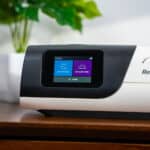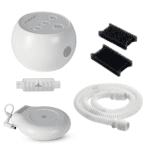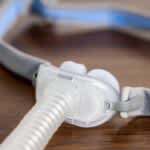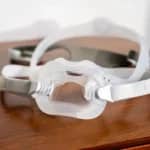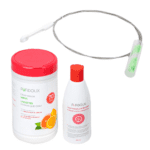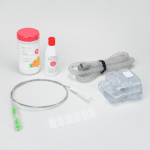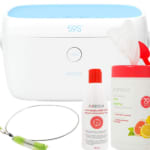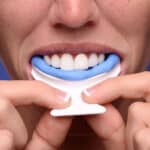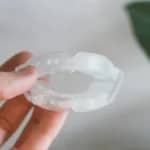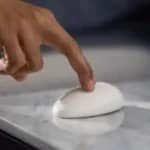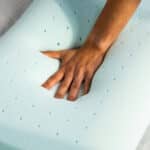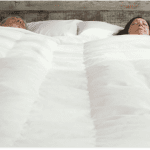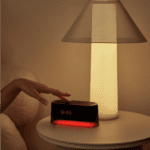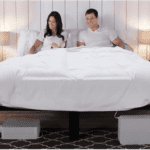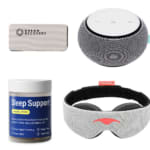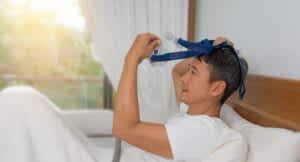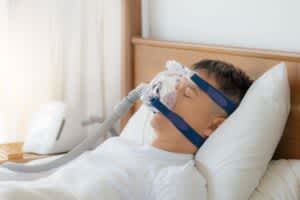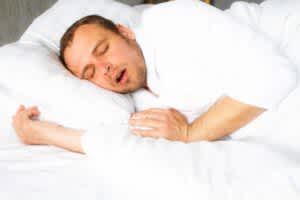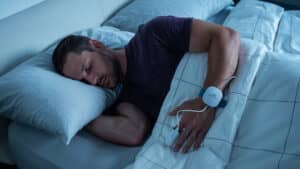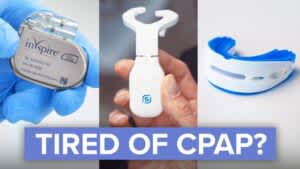The STOP-Bang score is a simple measurement that some health care providers use to identify people who may have obstructive sleep apnea (OSA). OSA is a common sleep-related breathing disorder in which the airway is repeatedly restricted during the night, causing disruptions to both breathing and sleep.
What Is the STOP-Bang Questionnaire?
The STOP-Bang questionnaire is a screening tool used by health professionals to assess a person’s risk of having obstructive sleep apnea. It is typically used by nonspecialists, meaning doctors and other health care providers who are not sleep specialists. The questionnaire is meant to help doctors identify high-risk individuals, but it cannot diagnose OSA. Diagnosis requires testing, typically in the form of a sleep study or polysomnography.
A risk factor is any characteristic that increases the likelihood of developing a disease. The STOP-Bang questionnaire asks yes or no questions about specific risk factors and symptoms of OSA. STOP-Bang is an acronym for key elements in the screening questions.
- Snoring: The first question asks whether a person snores loudly enough to be heard in another room or to awaken a bed partner, which is a potential sign of obstructive sleep apnea.
- Tired: The next question asks about whether a person regularly feels tired or falls asleep during the day. People with obstructive sleep apnea frequently experience sleepiness and fatigue.
- Observed: This question asks if any choking, gasping, or breathing interruptions have been observed during sleep, as these can be symptoms of OSA.
- Pressure: This question probes whether the respondent has or is being treated for high blood pressure. High blood pressure is often seen in people with OSA.
- BMI: The STOP-Bang asks whether the person being screened has a BMI greater than 35. Obesity is strongly linked to OSA.
- Age: The next question asks whether the person is over 50 years old, as older age is a risk factor for OSA.
- Neck circumference: The STOP-Bang asks whether the person’s neck circumference is greater than 16 inches around. A larger neck size increases the risk for OSA.
- Gender: The last question refers to biological sex. Males are at an increased risk of obstructive sleep apnea.
What Can You Learn From Your STOP-Bang Score?
A person’s STOP-Bang score may be used to evaluate the chances that they have obstructive sleep apnea. To calculate the score, every positive answer on the STOP-Bang questionnaire is scored one point, then the points are totaled, yielding a score between 0 and 8.
| Score | Obstructive Sleep Apnea Risk |
|---|---|
| 0-2 | Low Risk |
| 3-4 | Intermediate Risk |
| 5-8 | High Risk |
The health care provider administering the STOP-Bang questionnaire may use the result to determine whether additional testing with a sleep study might be beneficial. The STOP-Bang score in itself cannot diagnose OSA.
When Might Doctors Use the STOP-Bang Questionnaire?
The STOP-Bang questionnaire is typically used as a screening tool to identify patients who are at risk for having OSA. The STOP-Bang is usually used by health care providers who are not sleep specialists.
Doctors may use the STOP-Bang questionnaire to screen people who are having surgery. The STOP-Bang can help to estimate the likelihood that a person has undiagnosed OSA before surgery. This is important because people with undiagnosed OSA may be at a higher risk of complications during and after surgery.
Doctors may also use STOP-Bang to screen for OSA in primary care settings in people who aren’t scheduled for surgery.
Is the STOP-Bang Questionnaire Helpful?
Research has shown that the STOP-Bang questionnaire has a high degree of sensitivity, which means that it is good at detecting OSA. For this reason, experts recommend that people with high scores undergo a sleep study.
However, the questionnaire also has low specificity, meaning that it produces a high rate of false positives. A false positive is when the test result is positive even though the test taker does not actually have the condition. False positives can lead to additional testing that is not needed.
One limitation of the STOP-Bang is that it gives equal weight to all risk factors for OSA. Research suggests that certain risk factors may be more predictive of OSA than others. Because of its limitations, experts recommend against the routine use of the STOP-Bang as a screening tool in people who aren’t experiencing any symptoms like daytime sleepiness, snoring, or gasping in their sleep.
Adjustments to the STOP-Bang Questionnaire
Due to the limits of the STOP-Bang questionnaire, several attempts have been made to make it more accurate and useful.
- STOP-Obesity: Because obesity is a significant risk factor for OSA, some experts believe body fat should be a stronger consideration in the STOP-Bang. An adapted questionnaire called STOP-Obesity assesses the risk of OSA by considering snoring, fatigue, observed sleep disruptions, high blood pressure, and body fat percentage.
- STOP-B28: The relative importance of risk factors like sex and BMI change as people get older. Therefore, a modified questionnaire called the STOP-B28 has been proposed for older adults, which disregards sex but shifts the BMI cutoff down to 28.
The STOP-Bang also gives women a lower score than men, yet OSA becomes much more common in women during midlife. Because of this, some experts believe STOP-Bang scores should be interpreted differently in women.
Frequently Asked Questions
A score of 0, 1, or 2 on the STOP-Bang questionnaire indicates there is a low risk of obstructive sleep apnea. A score of 3 or 4 is linked to intermediate risk. Scores of 5 or above are associated with a high risk of OSA.
Central sleep apnea may be suspected in patients with symptoms of poor quality sleep along with risk factors like opioid use and heart failure. A sleep study is the only way to diagnose CSA.
Although a low score on STOP-Bang is pretty reliable for ruling out OSA, high scores are sometimes false positives. However, if your STOP-Bang score is 5 or above, there’s a strong chance that you have OSA. To be certain, a sleep study is required for a doctor to make a diagnosis.
References
The Sleep Doctor Forum: Real Experiences, Real Connections
Continue the discussion on the Sleep Doctor Forum. Connect with experts and fellow forum members on CPAP, sleep apnea, and all things sleep. A priceless resource that’s free to join.

